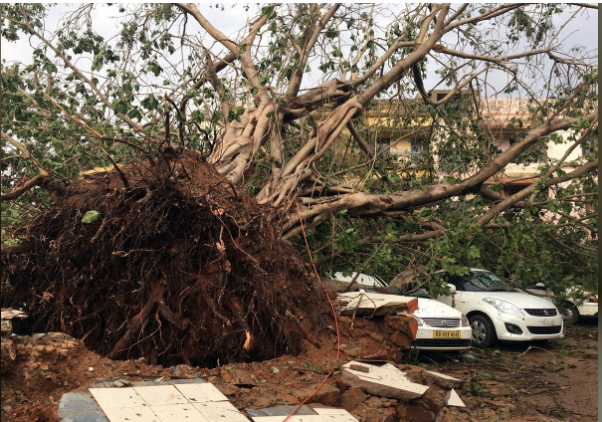Dhaka, May 4: The strongest cyclone to hit India in five years killed at least 12 people in Odisha, before swinging north-eastwards into Bangladesh Saturday where four more people died although more than a million had been moved to safety.
After it made landfall early Friday, tropical cyclone Fani had lost some of its power and was downgraded to a ‘Deep Depression’ by the Indian Meteorological Department as the storm moved inland over Bangladesh.
“The fear of a major disaster is mostly over as it has weakened,” Shamsuddin Ahmed, director of the Bangladesh Meteorological Department, told reporters.
A storm surge still breached embankments to submerge dozens of villages on Bangladesh’s low-lying coast, a disaster ministry official in Dhaka said.
About 1.2 million people living in the most vulnerable districts in Bangladesh had been moved to some 4,000 shelters.
The official said storm had damaged more than 500 houses. It destroyed several houses in the Noakhali district, where a two-year-old child and a 12-year-old girl were killed, and about 30 people were injured, local official Tanmoy Das told Reuters.
Bangladesh’s junior disaster minister Enamur Rahman told reporters that at least four people had been killed and 63 injured.
In India, authorities were assessing damage left behind by Fani, which had spent days building power over the northern reaches of the Bay of Bengal before tearing into Odisha.
Indian media reported that at least 12 people had died across the state, with most deaths caused by falling trees, but a mass evacuation of 1.2 million people in the 24 hours before the tropical cyclone made landfall averted a greater loss of life.
The seaside temple town of Puri, which lay directly in the path of Fani, suffered extensive damage, as winds gusting up to 200 km ph tore off tin roofs, snapped power lines, and uprooted trees Friday.
“Destruction is unimaginable… Puri is devastated,” Odisha’s Special Relief Commissioner Bishnupada Sethi told Reuters, adding that 116 people were reported injured across the state.
Video footage taken from an Indian navy aircraft showed extensive inundation in areas around Puri, with wide swathes of land submerged in the aftermath of the storm.
At least six people died in Bhubaneswar, Odisha’s state capital, where fallen trees blocked roads and electricity supply was still to be fully restored.
The cyclone season in the Bay of Bengal can last from April to December.
In 1999, a super-cyclone battered the coast of Odisha for 30 hours, killing 10,000 people.
But since then, technology advances have helped weather forecasters track the cyclones more accurately, giving authorities more time to prepare, and a mass evacuation of nearly a million people saved thousands of lives in 2013.
